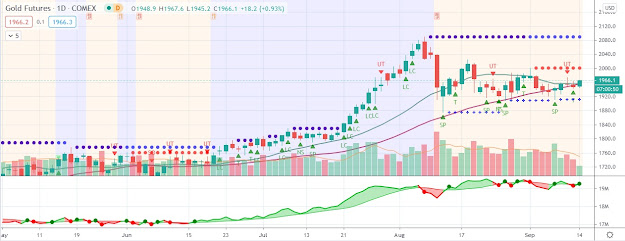A key driver of higher gold prices last week was weakness in the U.S. dollar
The gold price held near unchanged at $1,773 per ounce as U.S. financial markets opened modestly lower Monday morning. The price of gold fell to $1,763 in overnight trading as the U.S. dollar rallied, but subsequently recouped its losses. The S&P 500 Index slipped 0.4% to 1,360.51 after the Group of 20 (G-20) decided against raising additional bailout funds to aid the European sovereign debt crisis.
A key driver of higher gold prices last week was weakness in the U.S. dollar. The euro fared particularly well against the greenback, rising from near 1.32 to as high as 1.3487 on Friday. The dollar’s decline fueled gains in stocks and cyclical commodities, which extended their gains thus far in 2012. The Dow Jones Industrial Average (DJIA) surpassed 13,000 on an intra-day basis for the first time since May 2008, and crude oil hit a nine-month high above $109 per barrel.
While the gold price is now within 8% of its $1,923 all-time record high, investor attitudes toward the yellow metal remain quite tepid. According to the results of a recent Barron’s survey, “gold remains distinctly out of favor by mainstream investors.” Among the 51 advisors participating in the survey, just two recommended even minimal exposure to gold.
The Barron’s data reinforced a critical feature of the gold market highlighted last year by Eric Sprott, the billionaire founder of Sprott Asset Management. In a 2011 report, Sprott wrote that “As our analysis has revealed, gold is actually a surprisingly under-owned asset class – and one that has generated far more attention in the media than it probably deserves. While its exemplary performance since 2000 is certainly worthy of discussion, gold simply hasn’t commanded enough investment to warrant the bubble fears it seems to have aroused among market pundits and business commentators. The truth about gold is that most people simply don’t own it…yet.”
To support his claims, Sprott noted that at its present level of only 0.7% of global financial assets – compared to 5% in 1968 and 3% in 1980 – gold comprises an especially small proportion of investors’ portfolios. Furthermore, given the current level of gold prices and production capacity, it is not even possible to raise global gold holdings “back to a meaningful level.”
“Despite all this talk about the gold bubble,” Sprott contended, “the capital flows into gold vis-à-vis other financial assets have simply not been large enough to indicate any speculative mania.” Instead, investors can be confident that “they are not participating in any speculative bubble by owning gold. They are merely protecting their wealth.”
A key driver of higher gold prices last week was weakness in the U.S. dollar. The euro fared particularly well against the greenback, rising from near 1.32 to as high as 1.3487 on Friday. The dollar’s decline fueled gains in stocks and cyclical commodities, which extended their gains thus far in 2012. The Dow Jones Industrial Average (DJIA) surpassed 13,000 on an intra-day basis for the first time since May 2008, and crude oil hit a nine-month high above $109 per barrel.
While the gold price is now within 8% of its $1,923 all-time record high, investor attitudes toward the yellow metal remain quite tepid. According to the results of a recent Barron’s survey, “gold remains distinctly out of favor by mainstream investors.” Among the 51 advisors participating in the survey, just two recommended even minimal exposure to gold.
The Barron’s data reinforced a critical feature of the gold market highlighted last year by Eric Sprott, the billionaire founder of Sprott Asset Management. In a 2011 report, Sprott wrote that “As our analysis has revealed, gold is actually a surprisingly under-owned asset class – and one that has generated far more attention in the media than it probably deserves. While its exemplary performance since 2000 is certainly worthy of discussion, gold simply hasn’t commanded enough investment to warrant the bubble fears it seems to have aroused among market pundits and business commentators. The truth about gold is that most people simply don’t own it…yet.”
To support his claims, Sprott noted that at its present level of only 0.7% of global financial assets – compared to 5% in 1968 and 3% in 1980 – gold comprises an especially small proportion of investors’ portfolios. Furthermore, given the current level of gold prices and production capacity, it is not even possible to raise global gold holdings “back to a meaningful level.”
“Despite all this talk about the gold bubble,” Sprott contended, “the capital flows into gold vis-à-vis other financial assets have simply not been large enough to indicate any speculative mania.” Instead, investors can be confident that “they are not participating in any speculative bubble by owning gold. They are merely protecting their wealth.”




Comments
Post a Comment